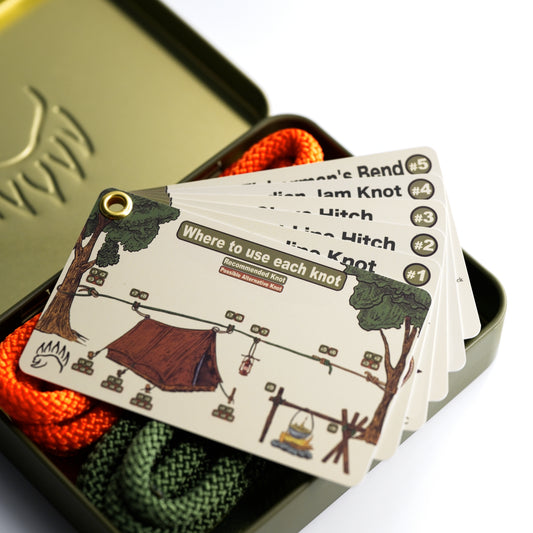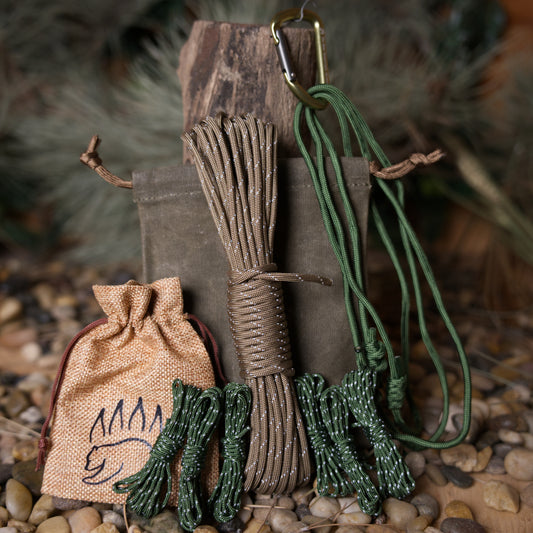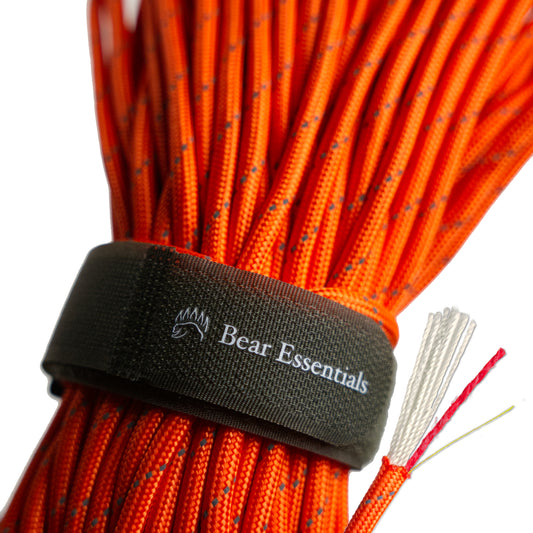How to Tie the Corned Beef and Salt Pork Knot
Usage
The Corned Beef and Salt Pork Knot is a practical knot used in cooking, particularly for binding meats such as corned beef and salt pork during boiling or roasting. Its adjustable nature ensures it remains tight as the meat shrinks during cooking.
Why Learn the Corned Beef and Salt Pork Knot?
This knot provides a versatile, adjustable binding solution for culinary tasks. Its secure grip ensures that the meat retains its shape while cooking, preventing it from falling apart or losing its structure.
Common Uses
-
Cooking:
- Binds corned beef or salt pork for boiling or roasting.
- Secures rolled roasts or brined meats during preparation.
-
Utility:
- Ties small bundles or packages in household tasks.
- Secures light loads requiring adjustable binding.
ABOK Number
(Ashley Book of Knots)
Other Names
Category
|
Notable Features
- Adjustable Binding: Tightens as the meat shrinks during cooking.
- Secure Grip: Based on the buntline hitch, preventing slippage during cooking.
- Versatile: Useful for various small-line binding tasks beyond cooking.
- Easy to Tie: Simple process for quick application in the kitchen.
- Durable Hold: Resists loosening under heat and tension.
Variations
(No true variations mentioned; section left blank.)
Similar Knots
Packer’s Knot vs. Corned Beef and Salt Pork Knot
- Pros: Simpler to tie and widely used for general binding.
- Cons: Less adjustable, may not tighten as effectively during cooking.
Butcher’s Knot vs. Corned Beef and Salt Pork Knot
- Pros: Faster to tie for basic meat binding tasks.
- Cons: Less secure and not adjustable for shrinking meat.
History
The Corned Beef and Salt Pork Knot, referenced in The Ashley Book of Knots (#191), likely originated in culinary and butchery practices where binding brined meats like corned beef was essential for cooking. Its design, based on the buntline hitch, reflects the need to secure meat that shrinks during boiling or roasting. Popular in maritime and military contexts for preparing preserved meats, it remains a specialized knot for cooks today.
Security Level
The Corned Beef and Salt Pork Knot is highly reliable for binding meat, with its buntline hitch base ensuring a tight, adjustable hold as the meat shrinks. It is more secure than the Packer’s Knot for culinary tasks but requires careful tightening to avoid damaging the meat. For slippery twine, ensure proper tension and a finishing half hitch.
Downsides
- Small line needed: Requires thin string, limiting its use to specific tasks.
- Adjustment required: Must be tightened during cooking, demanding attention.
Structure
- Wrap a small line or string around the meat, leaving a standing part and working end.
- Tie a buntline hitch by wrapping the working end twice around the standing part, then passing it through the loop.
- Moderately tighten the buntline hitch, allowing it to slide for adjustments.
- As the meat cooks and shrinks, slide the buntline hitch to tighten the binding.
- Once the meat is fully cooked, finish with a half hitch around the working end only.
Pro Tip: Use thin, strong string like butcher’s twine for easy tightening. Adjust the knot periodically during cooking to maintain a snug fit.
FAQ
Is the Corned Beef and Salt Pork Knot strong enough for heavy loads?
It’s designed for light binding like meat, not for heavy or structural loads.
What string works best for the Corned Beef and Salt Pork Knot?
Butcher’s twine or thin, strong cotton string ensures adjustability and grip.
How does the Corned Beef and Salt Pork Knot compare to the Packer’s Knot?
It’s more adjustable for shrinking meat but slightly more complex to tie.
Can the Corned Beef and Salt Pork Knot be used for non-culinary tasks?
Yes, for small bundle binding, but it’s optimized for meat preparation.
Why choose the Corned Beef and Salt Pork Knot over a simple tie?
Its adjustability ensures a tight hold as meat shrinks, improving cooking results.
Important Notes on Safety
Common failure points include using overly thick twine or failing to adjust during cooking, which can loosen the binding. Always verify the knot is used for appropriate tasks and correctly tied. Ensure the string is food-safe and strong enough for cooking. Monitor and adjust the knot during cooking to maintain tension. Practice tying with twine in low-risk settings first.









